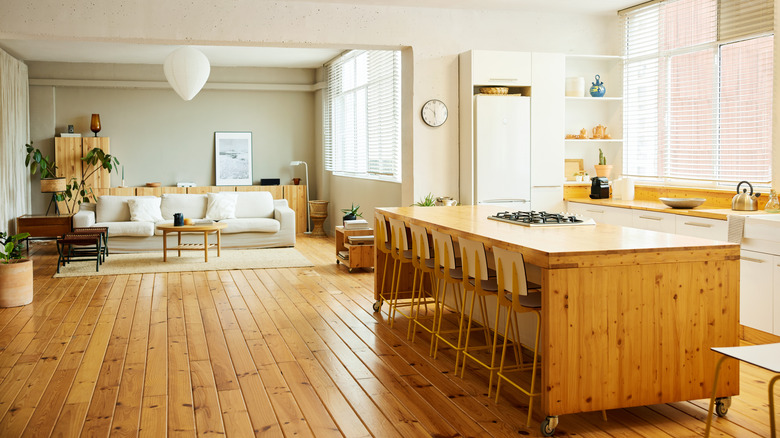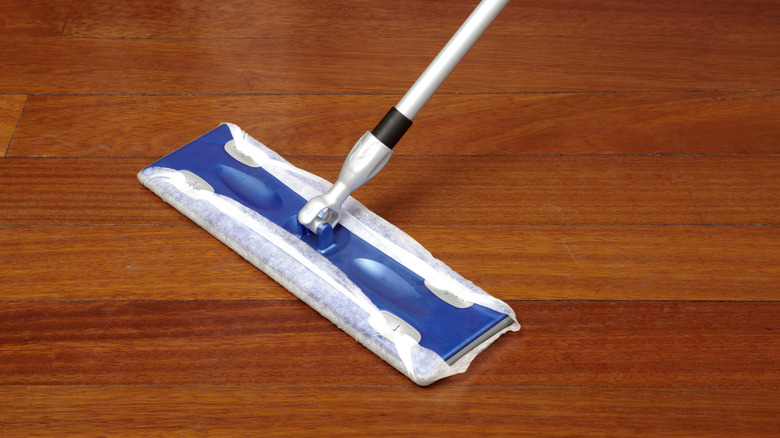Is It Safe To Use Clorox To Disinfect Hardwood Floors Without Causing Damage?
We may receive a commission on purchases made from links.
When it comes to caring for your hardwood floors, it might seem like there are many don'ts in the cleaning category. After all, you don't want to compromise the integrity of the wood, but it can be tricky to disinfect without stronger solutions and cleaning agents. Finding a good cleaning option that gets rid of germs and protects the wood may feel like finding a needle in a haystack, and while household staples like vinegar or olive oil can help hardwood shine, you still need something to disinfect, too. It's, no doubt, great news for anyone with wood flooring to discover certain Clorox products that can be used on hardwood materials. The key is choosing the correct products (like those that don't have bleach) to protect the planks from harm. For example, the Clorox Disinfecting Mopping Wipes are fine for hardwood floors and can help get rid of bacteria, leaving your planks cleaner than standard sweeping or vacuuming.
With ease, your floors can become one of the dirtiest areas in your home. After all, people are consistently tracking in dirt, pollutants, and all matter of debris from outside. This type of flooring also has a tendency to get dirtier and show more signs of dirt than other flooring, which means the upkeep is more intense and requires a regular cleaning approach. While it can be tempting to use the same products on hardwood as you do on other surfaces in your home, this isn't the best idea since ingredients like bleach are harmful to hardwood. However, with the appropriate Clorox formulas, you can still take advantage of the cleaning properties the brand offers without damaging your hardwood flooring.
Avoid Clorox products with bleach
According to the official Clorox website, their Clorox Scentiva Disinfecting Wet Mopping Cloths are safe to use on hardwood floors. This is mainly because the wipes don't contain any bleach, which can damage hardwood by deteriorating the wood, eating away at the timber, and causing it to weaken over time. Bleach can also affect the color of your hardwood flooring. Although it's in your home's best interest to avoid any products with bleach, you can still get the disinfecting benefits of Clorox in the wipes. These can fit onto your Swiffer Sweeper, making for easy application and a fuller scope that pulls up dirt and bacteria from the porous material without negatively affecting it.
When using the wet cloths, Clorox recommends using enough that you can see the wood visibility saturated. For the best results, the floors should stay wet for at least ten seconds, allowing the solution to sanitize the wood properly. If you want a really good disinfecting session, you can continue reapplying the cleaner to keep the floors moist for up to four minutes, which will help to get rid of germs and bacteria that survived the sanitation process. You can allow your floors to dry naturally after using the cloths, as the solution isn't dangerous to the seal or the wood beneath. Once dried, you can apply a mixture of beeswax and olive oil or another product, like Rejuvenate Professional Wood Floor Restorer and Polish, to give it a good shine. You should be utilizing a disinfecting cleaning your hardwood floors at least once a month to keep the porous material from absorbing all the dirt and grime that gets tracked in.

